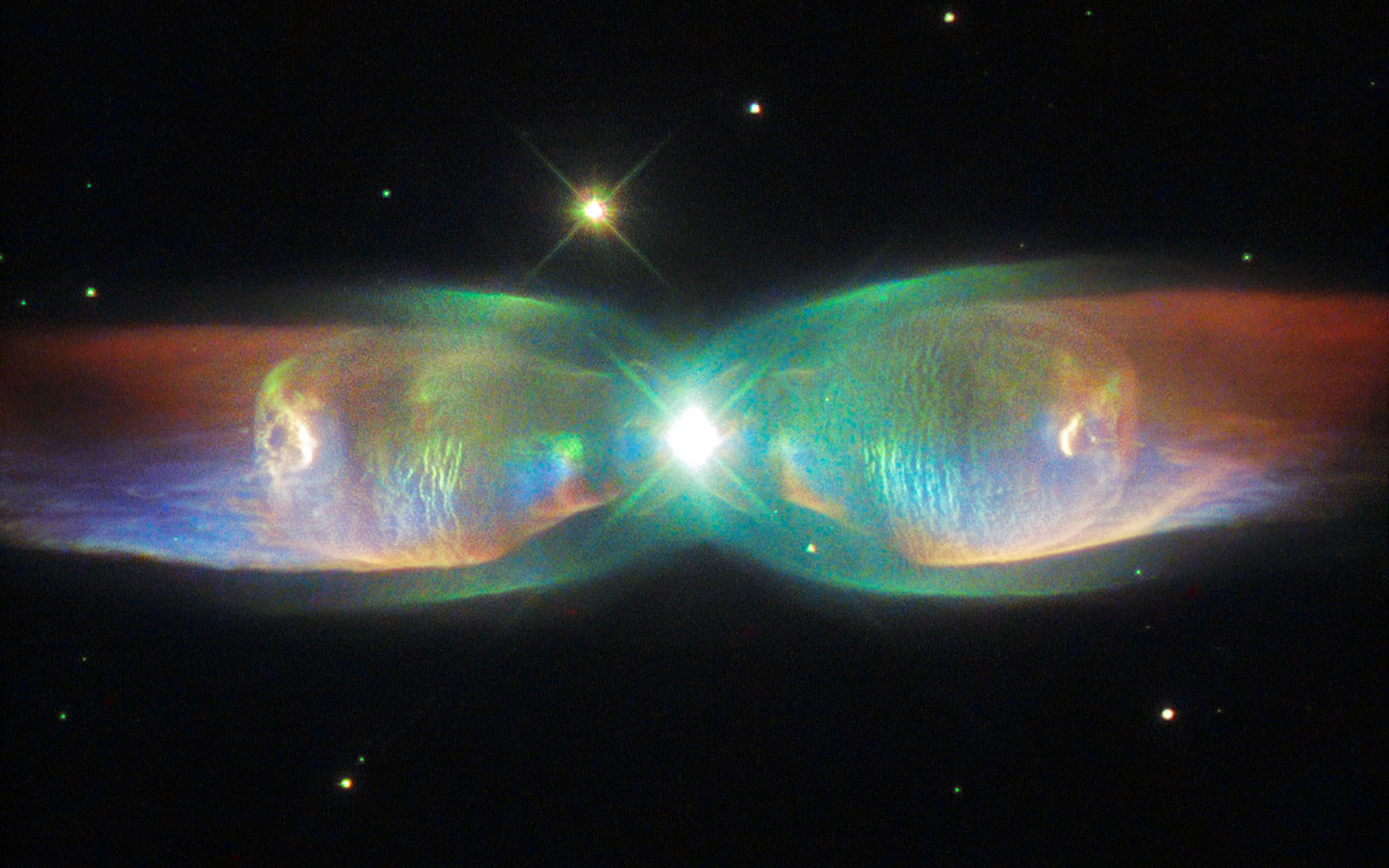Giant 'rogue waves' of invisible matter might be disrupting the orbits of stars, new study hints
New research shows how disruptions to binary star systems could be the key to detecting space's most confounding substance — dark matter.

Gigantic clumps of invisible dark matter that roam the universe may be wreaking havoc on binary stars, slowly tearing them apart, a new study suggests. Those violent effects could help reveal the true nature of the universe's most elusive entity.
Over the decades, astronomers have amassed an enormous amount of evidence pointing to the existence of dark matter, an invisible form of matter that accounts for around 85% of the mass in almost every galaxy. Initially, astronomers thought dark matter might be a new kind of particle known as weakly interacting massive particles (WIMPs), which would interact only with each other through gravity and the weak nuclear force.
But experiments designed to find the trace signals of WIMPs as they float through Earth haven't found anything, and the WIMP model has some difficulties matching the densities of matter within galactic cores. Because of this, scientists have been increasingly looking toward an alternative model in which the dark matter particle is extremely light — even lighter than the lightest known particle, the neutrino.
In these models, the dark matter particle would be more than a billion billion times lighter than an electron. And we know from quantum mechanics that all particles have a wave-like nature associated with them, which we can usually detect only in subatomic experiments. But in this scenario, the dark matter would be so light that it would act more like a wave at scales the size of the solar system or bigger.
Recently, a team of astronomers in China examined this model and looked for ways to observationally detect this kind of dark matter. They reported their work in an article published to the preprint server arXiv in April. (The study has not been peer-reviewed yet.)
Ultralight dark matter wouldn't buzz around the cosmos like tiny bullets. Instead, it would slosh around every galaxy like a vast, invisible ocean. And just like oceans can support waves, the bath of ultralight dark matter would have oscillations of its own. Some of these waves could potentially bundle together into a single group that travels interdependently while maintaining their shape — known as a soliton.

These solitons would be completely invisible — like giant, rogue waves washing through the galaxy but made of matter so light that they would barely affect their surroundings. But the scientists behind the new study discovered that the solitons' huge size could subtly alter the gravitational environment around them.
Get the Space.com Newsletter
Breaking space news, the latest updates on rocket launches, skywatching events and more!
The gravitational influence of the solitons would be so weak that almost everything in the galaxy would be unaffected by them. But binary pairs of stars that have wide separations are only weakly held together by their mutual gravity, so the solitons would be big enough to alter their orbits.
The researchers identified all wide binary pairs in the Gaia catalog of the billion stars closest to the sun and flagged them for future observations. If the binary stars were to start drifting away from each other, that might be due to the influence of solitons.
The team found that by watching the binary stars evolve, we could have a very sensitive probe of ultralight dark matter — perhaps even more sensitive than any Earth-based laboratory designed to detect this kind of dark matter. So, if something strange seems to be happening to binary stars, we might just have our first clue as to the nature of dark matter.
Join our Space Forums to keep talking space on the latest missions, night sky and more! And if you have a news tip, correction or comment, let us know at: community@space.com.

Paul M. Sutter is an astrophysicist at SUNY Stony Brook and the Flatiron Institute in New York City. Paul received his PhD in Physics from the University of Illinois at Urbana-Champaign in 2011, and spent three years at the Paris Institute of Astrophysics, followed by a research fellowship in Trieste, Italy, His research focuses on many diverse topics, from the emptiest regions of the universe to the earliest moments of the Big Bang to the hunt for the first stars. As an "Agent to the Stars," Paul has passionately engaged the public in science outreach for several years. He is the host of the popular "Ask a Spaceman!" podcast, author of "Your Place in the Universe" and "How to Die in Space" and he frequently appears on TV — including on The Weather Channel, for which he serves as Official Space Specialist.
-
Classical Motion Do you know what is amazing? When the naked electrons and protons leave the sun, their acceleration is just beginning. No one knows where it ends or how fast they travel when it's over. What a super demonstration of an anti gravity acceleration. This should be the talk of the town.Reply
What has happened over the eons of this action? This acceleration nullifies electrical interaction. It will not allow electrical and self inertia alignment for bonding. No tilting or flipping can be done under it. Frozen misalignment. Frozen with velocity.
Interesting concept of WIMP. I have a candidate. A dipole. The notorious H1 atom. Only this dipole is a high velocity dipole. With a different spectrum and behavior than that of our "normal" dipoles. Atomic dipoles.
The mass and the spin rates of these dipoles will produce a different spectrum, with a much higher Q. A much more filtered and selective response. This unit should be very weak electrically, weak(skinny) in interaction, not energy.
The energy and the mass will be a little higher than normal. It will have G, but the high velocity will keep G rarefied.......not collective. Hard to interact with, invisible, and hard to detect. One would probably need a hard long duration gamma to detect such. But it might have fuzz G.
But we would have to invent a new dynamic with this solution too.
By what method do these particles go thru, to let the electric overcome the velocity alignment? For to bond?
Unless one slides inside the other to produce neutrons. Very fast and dangerous neutrons. Do these neutrons decay? Could we detect single decays at a distance? Could we detect single bonding at a distance? Background static? A changing neutron flux dynamic. Questions. Questions.
It's all very mysterious. I like it.
What ever is going on, there is a lot of charge out there. Somewhere.










